Discuss Notion Music Composition Software here.
5 posts
Page 1 of 1
|
Anyone of an age who grew up in North America will recognize this piece as the theme from the morning kid's show Captain Kangaroo, but it's a really delightful piece of mid-Century Modern optimism, and masterfully arranged. Written in 1952 by Edward White, it rested in the Chappell Music Company's library of licensable recordings until selected by the producers of the TV show that made it instantly recognizable.
Transcribed over a period of many months into Notion from a piano conductor's score obtained from the Light Music Society's library catalog, I had to make some scoring decisions regarding ranges and instrumentation as the conductor's score was pretty vague in some areas (example: five notes in a chord to be distributed among three string sections, instructions for stings and brass to take a part without defining which brass instruments, etc.) but all in all it was fun because it's such a fun piece. I've often thought I would challenge myself to compose happy music in my own work, but somehow it just doesn't seem to be in me. I could never put a piece like this together using the media of an orchestra! Anyway, enjoy and feedback is always appreciated! phpBB [audio] technical notes: The transcription from Notion was exported as a MIDI export to Studio One where it was assigned instruments (Spitfire Studio Woodwinds and Brass, Harmonic Subtones Solo Violin and first chairs, and LASS3 String sections. Playing techniques were assigned using Sound Variations in S1 and then automation of the various instrument parameters was recorded for control of dynamics, expression and vibrato as each instrument required.
iMac (Retina 5K 27", 2019) 3.6 ghz I9 8-core 64 gb RAM Fusion Drive
with small AOC monitor for additional display macOS Sonoma 14.4 2 - 500 gb + 2 - 1 tb external SSD for sample libraries M Audio AirHub audio interface Nektar Panorama P1 control surface Nektar Impact 49-key MIDI keyboard Focal CMS40 near-field monitors JBL LSR310S subwoofer Notion 6/Notion Mobile + Studio One 6 Pro http://www.tensivity.com |
|
This is excellent, but it's too hot . . .
THOUGHTS Everything is excellent--including the deep bass--but it's too hot . . . I listened to it played through SONY MDR-7506 headphones connected to my Apple 27"iMac (Late 2013) at half-volume, it's very nice; but at full-volume it's too loud . . . 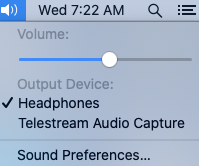 Played at half-volume, I think this probably is the best mix and selection of VSTI virtual instruments and VST effects you have done--except for being too hot . . . SUGGESTIONS For a while, I always started with mixes done when listening to the calibrated full-range studio monitor system here in the sound isolation studio, which has a flat equal-loudness curve running from 20-Hz to 20kHz, although I don't hear much above 13kHz, but so what . . . I did it this way and then made adjustments for headphones until there was a nearby lightning strike and one of the Kustom two-way self-powered loudspeaker units exploded in flames (literally) . . . Fortunately, I was in the sound isolation studio at the time; but although I have a few replacement units, I have not replaced it; hence am doing headphone mixes now . . . I did studio monitor mixes for about two years and made adjustments for headphone listening; so I can do reasonably accurate headphone mixing when I follow a few tried and verified rules developed before the aforementioned lightning strike . . . Basically, it's a "cookie cutter" type of thing; and I have done it enough times to develop it into a system . . . I post songs and science fiction radio plays to YouTube, and YouTube does additional audio processing which makes the mixes better and ensures they conform to generally accepted standards, although there are a few nuances that I have yet to understand sufficiently to achieve . . . Using this song from Rammstein and my own song about flying saucers--the latter of which might appear to be a bit goofy, except that in 2020 Congress authorized funding for researching UFOs and approved making UFO events available to the public, in fact requiring such disclosure, said legislation being signed in early-January 2021, thereby becoming federal law--you can get a sense of what is at the extreme of general acceptability . . . [NOTE: The keyboard player is fantastic, and the singer is amazing . . .] [NOTE: The most recent UFO events were observed by US military personnel in the San Diego, California area, but this song is about the UFO event off the coast of Alaska . . . ] I can listen to both of these YouTube song videos at full-volume on the iMac with SONY MDR-7506 headphones . . . It's loud but not too loud, and YouTube processes the audio for both these songs to ensure the limits are within generally accepted bounds . . . As you watch and listen to the flying saucer song, you will notice some of the VST effects plug-ins I use, with the most elaborate sets being on the vocals . . . I use three VST effects plug-ins to control the volume level and overall tone for the Main stereo output in Studio One Professional 6: (1) Saturn v1 (FabFilter Software Instruments) for tone control 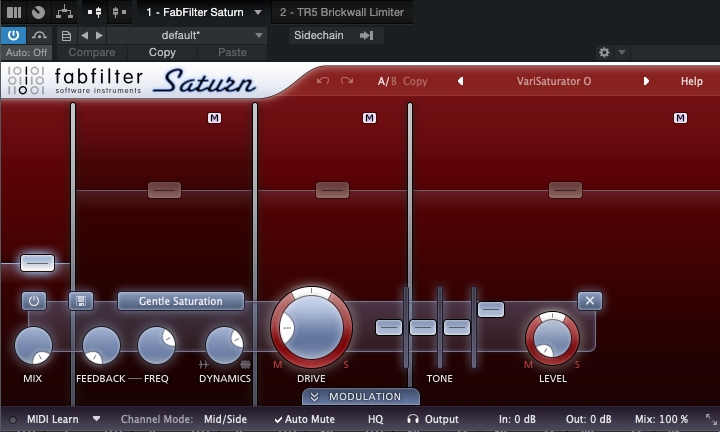 (2) Brickwall Limiter (IK Multimedia) for ruthless volume control 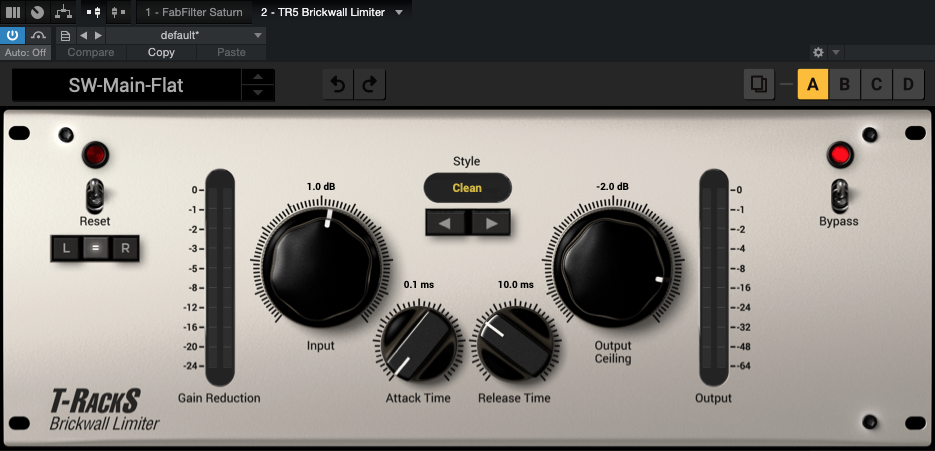 (3) WLM Loudness Meter (Waves) to verify loudness is within generally-accepted bounds 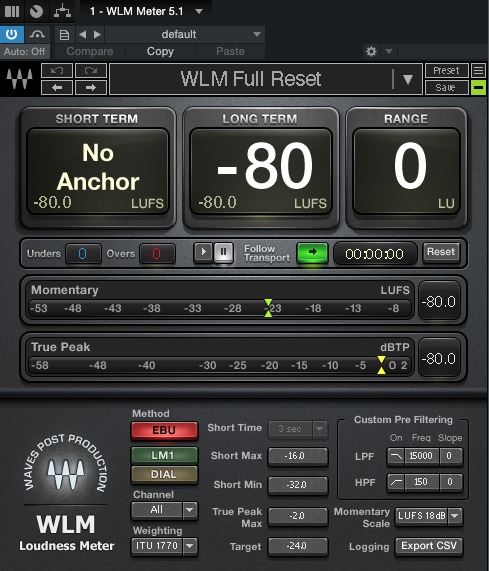 I do not use the WLM Loudness Meter all the time, since setting it to recommended constraints tends to result in mixes not be so loud as I like them; but it's useful as a guide for conforming to various standards . . . Primarily, I use (1) and (2) and set them accordingly . . . I have a MOTU 828mk3 Hybrid external digital audio and MIDI interface; but it's not working, hence I use Apple Core Audio at present, which works nicely but it doesn't provide the more detailed LED volume level information of the MOTU 828mk3 Hybrid, which to a certain extents requires me to make a few presumptions regarding what I post to YouTube . . . Is it 0dB, -2dB, or -6dB? I set the IK Multimedia "Brickwall Limiter" to -2dB as the ceiling, but without the more detailed information provided by the MOTU 828mk3 Hybrid, what actually is the ceiling for what I post to YouTube is a guess; and then YouTube processes the audio to its standards, which actually improves my mixes, and kudos to YouTube for doing what I am certain is advanced audio processing and in some respects is like having my mixes improved by a mastering engineer, albeit an "artificial intelligence (AI)" . . . There is a new version of what I call the "mastering tone processor", and it's "Saturn 2", which probably for marketing purposes the FabFilter Software Instruments' folks now call a "distortion" plug-in, which I consider to be a bit of nonsense, but so what . . . I have not upgraded to "Saturn 2", yet, but I think it will have the mastering tonal capabilities of "Saturn 1", probably enhanced . . . As you probably know, I am highly focused on deep bass since it's the magic carpet upon which everything else rides; and in this respect your mix of the Captain Kangaroo theme is excellent, although at half-volume, currently . . . I use a lot of the IK Multimedia "T-RackS" effects plug-ins, all of which are very precise emulations of real effects processors used since the 1950s at first to ensure radio broadcasts complied with FCC regulations but soon thereafter were used by recording studios since they have melodic characteristics that make instruments and singing sound better . . . In fact, when you listen to music on the radio, Sirius, television, iTunes, web, and so forth, the audio is processed by these types of audio effects units--virtual or real--so the idea that what you are hearing is like what you would hear in an architecturally elegant concert hall is a grand illusion, since it's all elaborately processed to appear to be "real" . . . Actually, there is nothing real about it . . . For reference, I do not use the factory presets for "Saturn1" and prefer to adjust them for various purposes . . . Generally, I boost the deep bass a tiny bit and lower the high-frequencies and mid-range frequencies--especially around the "sweet spot" for human hearing, which actually is not sweet, at all . . . [NOTE: For those folks who might have slept through Mathematics classes, this is logarithmic. Clearly the frequencies are logarithmic, but while the volume levels appear linear, they also are logarithmic, since decibels (dB) are logarithmic, where the key bit of information is that for a sound to be perceived as being twice as loud, the volume level needs to be multiplied by 10--another bit of research from Bell Laboratories . . . ] Decibels ~ Wikipedia 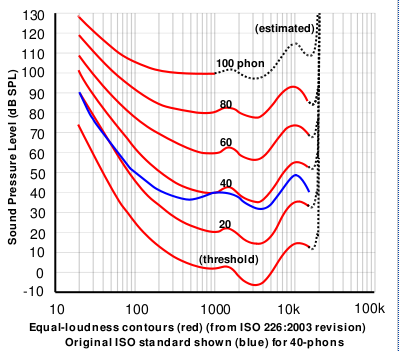 Equal Loudness Curves As you can see, the volume level for deep bass around 20-Hz needs to be vastly higher than the volume level for the "sweet spot" dip around 2,500-Hz . . . The equal loudness curves were developed at Bell Laboratories specifically to determine the most optimal way to do telephone communications, including transmission, headsets, and so forth . . . Equal Loudness Curves ~ Wikipedia In addition to "Saturn 1", I use the IK Multimedia "Vintage Program Equalizer EQP-1A", which is based on the Pultec® EQP-1A vacuum-tube unit that was released in 1951 . . . I use it to enhance the deep bass of the IK Multimedia "EB-0 Devil Bass" I am using now which is a VSTI virtual emulation of the classic Gibson EB-0 bass and has even deeper bass tone than the Höfner "Beatle Bass" Paul McCartney uses, although it has a similarly short neck . . . The only change I make is to increase the output volume of the default "FATT-1A" preset to "6.5" . . . 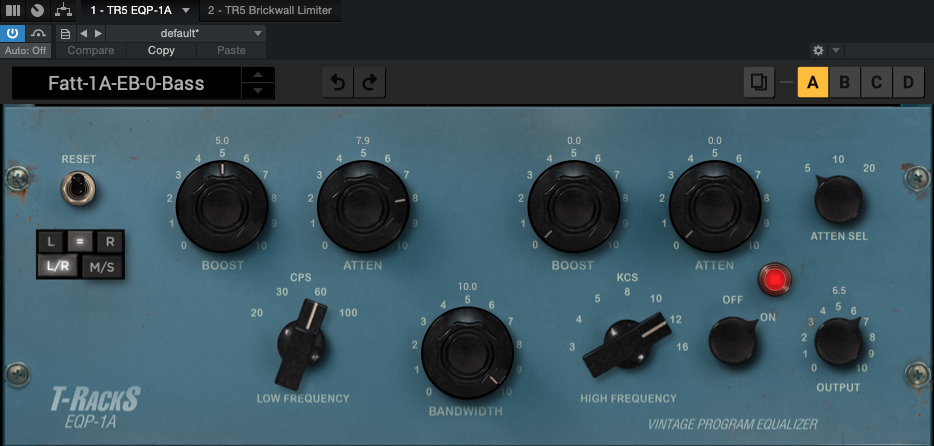 For reference, every time IK Multimedia decides to build a new manufacturing facility, they have truly absurd "Group Buy" discount sales where depending on the number of folks who participate by purchasing one software product, everyone gets some number of free products; and last year they had a 25-year anniversary "Group Buy", where I got 50 free products; and combined with all the other IK Multimedia stuff already purchased over the years mapped to everything software for digital recording they made at the time, which since then I have added a few more items that were released more recently . . . I mention this, because it's always good to get on mailing lists to be notified of super discount sales . . . None of the third-party companies bombard you with emails, but it's a good source of information and some of them provide links to free instruments and effects plug-ins (especially Native Instruments) . . . SUMMARY This is an excellent rendition; the deep bass is superb; the other instruments are outstanding; but it's too hot . . . At half-volume on the iMac here in the sound isolation studio when I listen with SONY MDR-7506 headphones, it's perfect . . . Lots of FUN! P. S. While on the topic, it's useful to know that one of the techniques that makes mixing easier and more precise is to use Pro-C2 (FabFilter Software Instruments) for "ducking", which is a technique where based on the volume level of one instrument or vocal track other instruments and vocal tracks are lowered in volume automagically, which lasts only so long as the primary instrument or vocal track is doing something . . . If "ducking" is done to move the vocal melody to the front of the mix, then every time the singer stops singing, the "ducked" instruments return to their "unducked" volume levels automagically, and when this is done with graceful settings, it's essentially transparent, hence is not noticed consciously by the listener . . . One of the best examples of this is the way The Rolling Stones play and sing in "Miss You", where watching everyone is enlightening; but the real clue comes from watching Charlie Watts when he plays snare drum rimshots when he wants to become the star of the performance for few milliseconds, where specifically he only plays the snare drum rimshot and nothing else . . . This makes sonic space, and he does it when except for the electric bass, nothing else is happening . . . It looks awkward, and it took me a while to discover what and why he was doing selected snare drum rimshots this way . . . [NOTE: This is not being done by automagical "ducking" under control of software-emulated effects plug-ins. Instead the musicians are doing the "ducking" themselves by (a) the way they play, (b) when they play, and (c) when they do not play . . . ] For the most part, the primary players never play all at the same time (drums, rhythm and lead guitars, keyboards, horns, and harmony singers) . . . Instead, they take turns . . . For another key clue, watch the way Keith Richards (rhythm guitar) plays and when he plays . . . It's complementary, and I call it "orthogonal"; but the more colloquial term is "tasty" . . . Everyone and every instrument gets to be the star of the song at various instants in time . . . And of course, when there is a lead singer, (a) the lead singer is the star and (b) the musicians and backup singers accompany the lead singer . . . It's brilliant . . . For reference, Wave Arts has an effects plug-ing ("TrackPlug") that has a brickwall equalizer, which when combined with "ducking" makes it easy to create unique sonic spaces for each instrument and voice once you discover how to configure everything . . . TrackPlug also has an equalizer section, a noise gate, dual compressors, and various fine-tuning capabilities . . . In particular, I use the TrackPlug noise gate on voice-overs and singing to prevent background studio noise from being heard when I am not speaking or singing, which makes it another tool for isolating audio to create unique sonic spaces . . . FabFilter Software Instruments has an equalizer, Pro-Q3, that can be used as a "brickwall equalizer" and much more . . . I use Pro-Q3, but for vocals I like to use TrackPlug 6 because it has several key components all in one VST effects plug-in (noise gate, brickwall equalizer, equalizer, dual compressors, and an output limiter) . . . For reference, a "brickwall equalizer" is a combination of ruthless low-pass and high-pass filters, where for example you can set it to discard everything below 100-Hz and everything above 10-kHz, which removes the deep bass and high-frequencies, where the former tends to make things muddy and the latter tends to introduce unwanted hiss, background noise, and so forth . . . In particular, the goal of this producing and audio-engineering stuff is to focus on each instrument and singer so general overlapping is eliminated . . . Explained another way, it prevents the sonically confused scenario where everyone is playing and singing all at the same time, which overall creates an incoherent sonic blur and is made all the more destructive when there are uncontrolled electric guitars or any other intrinsically dominating instrument like a cathedral pipe organ, Scottish bagpipes, and certain types of droning synthesizers . . . The Beatles did this a different way, although with some audio-engineering, where for example George Martin used low-pass and high-pass filters on the reverb units, with the logic being that deep bass made the reverb muddy, and high-frequencies increased background noises, hiss, and so forth while contributing nothing of value . . . Yet, it was the way the Beatles played their instruments that introduced what I call the "orthogonal" aspect; and like The Rolling Stones, the Beatles took turns with George Martin and the Abbey Road Studios' audio-engineers ensuring everyone and every instrument was the star of the song at various instants in time . . . 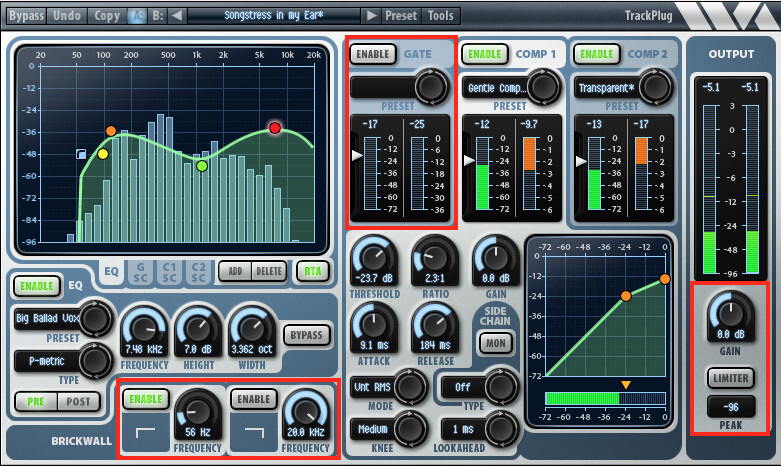 TrackPlug 6 (Wave Arts) In other words, the goal of this style of producing and audio-engineering is to present to the listener each instrument and singer as clearly and distinctly as possible so the listener's brain perceives the music and singing in the way which is most logical to the listener . . . Instead of producing and mixing the way you prefer to perceive it, you produce and mix so the listener can perceive the music they way the listener prefers to perceive; and you do this by creating what one might call a "neutral" or "unbiased" mix . . . It's actually a combination of (a) what you perceive and (b) what you want the listener to perceive, but it's done in a way which like the moon on a clear night shines equally on everything . . . The goal is to prevent clouds from blocking the light of the moon . . . Fabulous!
Surf.Whammy's YouTube Channel
The Surf Whammys Sinkhorn's Dilemma: Every paradox has at least one non-trivial solution! |
|
Thanks SurfWhamy. Always a lot to absorb in your posts and I will work through it!
I'll give the recording I made another listen with your comments in mind and see if it could use a little bit of taming.
iMac (Retina 5K 27", 2019) 3.6 ghz I9 8-core 64 gb RAM Fusion Drive
with small AOC monitor for additional display macOS Sonoma 14.4 2 - 500 gb + 2 - 1 tb external SSD for sample libraries M Audio AirHub audio interface Nektar Panorama P1 control surface Nektar Impact 49-key MIDI keyboard Focal CMS40 near-field monitors JBL LSR310S subwoofer Notion 6/Notion Mobile + Studio One 6 Pro http://www.tensivity.com |
|
SurfWhammy, thanks again for listening and the advice regarding the volume level of the recording. I analyzed using a perceived loudness analyzer in Audacity and adjusted the level to 23 lufs, which is indeed about half of the volume level of the original recording.
New recording posted at same link.
iMac (Retina 5K 27", 2019) 3.6 ghz I9 8-core 64 gb RAM Fusion Drive
with small AOC monitor for additional display macOS Sonoma 14.4 2 - 500 gb + 2 - 1 tb external SSD for sample libraries M Audio AirHub audio interface Nektar Panorama P1 control surface Nektar Impact 49-key MIDI keyboard Focal CMS40 near-field monitors JBL LSR310S subwoofer Notion 6/Notion Mobile + Studio One 6 Pro http://www.tensivity.com |
michaelmyers1 wroteSurfWhammy, thanks again for listening and the advice regarding the volume level of the recording. I analyzed using a perceived loudness analyzer in Audacity and adjusted the level to 23 lufs, which is indeed about half of the volume level of the original recording. Much better!
Surf.Whammy's YouTube Channel
The Surf Whammys Sinkhorn's Dilemma: Every paradox has at least one non-trivial solution! |
5 posts
Page 1 of 1
Who is online
Users browsing this forum: No registered users and 18 guests

